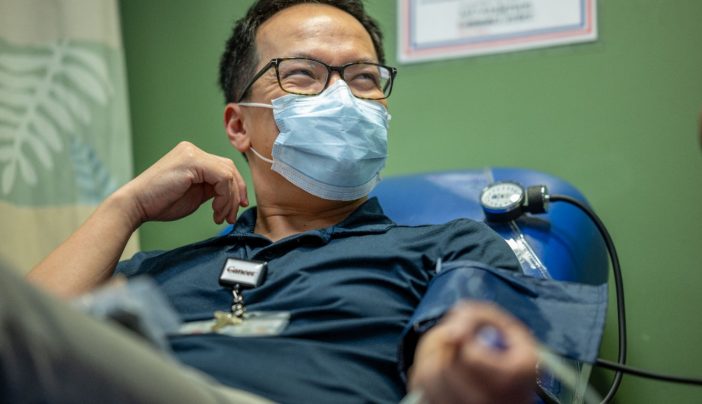Blood
Surgeon glad to donate blood after FDA eligibility update
When the Food and Drug Administration (FDA) lifted a decades-old blood donor ban last year, Hop Tran Cao, M.D., immediately rolled up his sleeve.
“I have wanted to donate for a very long time but had previously never been permitted because I grew up in France during the ‘mad cow disease years’ in Europe,” says Tran Cao. “I signed up to donate at the MD Anderson Blood Bank as soon as I heard about the change in eligibility.”
An expanded blood donor pool
For more than 20 years, the FDA prohibited blood donations from people who had spent time in the United Kingdom, France, or Ireland during the 1980s and 90s to prevent the transmission of a deadly brain infection known commonly as “mad cow” disease, or Bovine Spongiform Encephalopathy (BSE).
The chronic, degenerative disease can be spread to humans through the consumption of diseased meat. To control potential spread to the United States, the FDA had established strict restrictions on blood donation eligibility. Those who had spent a cumulative time of five or more years from 1980 to 2020 in any combination of countries in Europe were prohibited from donating blood.
It wasn’t until 2022 that the ban was lifted, allowing more people to safely donate.
Filling a need for type O blood donors
Since then, Tran Cao has gladly taken a seat every 56 days to donate whole blood at MD Anderson.
“I have type O blood, which is always in need, as nearly all patients can use it,” he says. “Being a surgeon, I understand firsthand just how important blood availability is to our ability to care for our patients. My motivation for donating is a natural extension of my reason for going into medicine, frankly: to help patients, and I can’t think of a simpler, more effective way to help than through blood donation.”
Donors can give whole blood, like Tran Cao does, or other blood products like plasma or platelets.
Platelets are tiny cells in the blood that form clots to stop bleeding. They are crucial to cancer patients due to how treatments like chemotherapy and radiation therapy often suppress the bone marrow, resulting in lower platelet production. Plasma is used in emergencies and trauma procedures to help stop bleeding.
These donation processes are safe and comfortable but can take a bit longer than a whole blood donation, which usually only takes around 20 – 45 minutes to complete.
Blood donation is vital for cancer patients
As the largest transfusing hospital in the nation, maintaining a steady blood supply at MD Anderson is essential to providing safe care and optimal outcomes for our cancer patients.
Tran Cao sees the direct benefit of blood for patients who require transfusions during surgery and remembers how past nationwide blood shortages – like during the pandemic – have impacted them.
“We were able to minimize disruptions to patient care,” he says. “I’m proud of the way we worked together during those challenging times. It brought into focus how critical blood is to a cancer center like ours.”
Tran Cao is grateful to the thousands of other MD Anderson employees and outside donors who selflessly give blood routinely, while also recognizing that not everyone can donate for various reasons. If a deferral is holding you back, he offers some words of encouragement.
“If you’ve been told you couldn’t donate in the past, check for updates in blood donation eligibility guidelines every now and then,” he says. “Things may change!”
Make an appointment to donate at MD Anderson Blood Bank online or call 713-792-7788.

